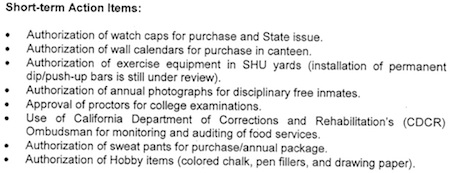
NY Bar Association Report: Supermax Isolation = Torture
“The Brutality of Supermax Confinement”
New York City Bar Committee on International Human Rights
September 2011
This report addressed the dramatic growth of “supermax” confinement facilities in the United $tates over the past three decades and highlights the conditions of torture and violations of domestic and international law. As an introduction to long-term isolation in U.$. prisons, and an overview of relevant laws and cases, this report is an excellent resource.
The report cites estimates that 80,000 prisoners “…endure conditions of extreme sensory deprivation for months or years on end, an excruciating experience in which the prisoner remains isolated from any meaningful human contact.” Articles in Under Lock & Key regularly testify to this torture that prisoners face in long-term isolation. The authors point out that estimates are widely varying and total numbers of people in supermax is not known. MIM(Prisons) has conducted our own survey to collect statistics on prisoners in control units and we estimate there are close to 110,000 prisoners currently in long-term isolation.
The authors correctly conclude about these torturous conditions: “The policy of supermax confinement, on the scale which it is currently being implemented in the United States, violates basic human rights.” Though MIM(Prisons) would question how this policy would be ok if the scale was smaller. This “scale” caveat is possible because the authors fail to address the system that determines who gets locked up in isolation and why they are put there.
As a part of an overview of relevant legal cases and laws, the report notes that the courts have failed to address this torture, which the authors consider a violation of the Eighth Amendment: “As long as a prisoner receives adequate food and shelter, the extreme sensory deprivation that characterizes supermax confinement will, under current case law, almost always be considered within the bounds of permissible treatment.” They demonstrate some of the legal difficulties in proving an Eighth Amendment violation, including the added legal burden of the Prison Litigation Reform Act (PLRA) which requires prisoners to show physical injury before bringing an action for injury suffered in custody.
The authors describe how supermax confinement violates international law based on the Universal Declaration of Human Rights, the American Convention on Human Rights, the UN Standard Minimum Rules for the Treatment of Prisoners, the International Covenant on Civil and Political Rights, and the Convention Against Torture, among others. They note that international law has not been a factor for U.$. courts in these cases and call for change in this regard.
The report concludes with the following recommendations:
1. The provision in the PLRA providing that inmate plaintiffs may not recover damages “without a prior showing of physical injury” should be repealed;
2. Prisoners with serious mental illness should never be subjected to supermax confinement;
3. Conditions of extreme isolation and restriction should be imposed only when an extremely serious threat to prison safety has been established, and even in such circumstances supermax confinement should be for the shortest time possible and inmates should be afforded due process, and an opportunity to contest the confinement and appeal;
4. Any form of segregated housing should provide meaningful forms of mental, physical and social stimulation; and
5. A national task force should be established to promptly report on the numbers of inmates being held in supermax confinement in state and federal prisons and their conditions of confinement, and to propose further legislative and administrative reforms.
As humynists, we say long-term isolation is torture and it should be abolished immediately. And as we’ve discussed elsewhere, we disagree with point 2 as a campaign in that it justifies the use of torture against the strongest resisters while misconstruing the real relationship between long-term isolation and mental illness.
If implemented, the Committee’s recommendations would certainly reduce the number of prisoners suffering in long-term isolation, and are therefore progressive recommendations for a Bar Association that works within the injustice system that uses supermax confinement as a tool of social control. But this very system, which they point out has demonstrated its willingness to ignore the law and act outside of standards of common decency set out by the Eighth Amendment, certainly cannot be trusted to determine “when an extremely serious threat to prison safety has been established.”
The authors ignore the broader context of supermax confinement and its use in the United $tates. As we report in an article on the history of control units: “The truth behind the reasons these control units are needed is they are a means of political, economic and social control of a whole class of oppressed and disenfranchised people. These include especially African, Latino and indigenous people who are a disproportionate part of control unit populations.” Prisons in the United $tates are a breeding ground for resistance to the system that unjustly locks up segments of its population, and supermax units are required to further control the inevitable education and organizing that takes place among those who come face to face with the criminal injustice system.
While this report is useful for both the legal citations and the study of the harms caused by long-term isolation, it is important that we put it in the broader context of the criminal injustice system and understand that supermax torture cannot be reformed away within this system. We hope to make some significant improvements which will have a particular impact on the lives of our politically active comrades behind bars who are targeted for lockup in these isolation cells. And in that battle we unite with the NY Bar Association and many others who clearly see the injustice and inhumanity of supermax isolation.
Prisoners interested in a copy of this report should contact the New York City Bar Association at 42 West 44th Street, New York, NY 10036.








